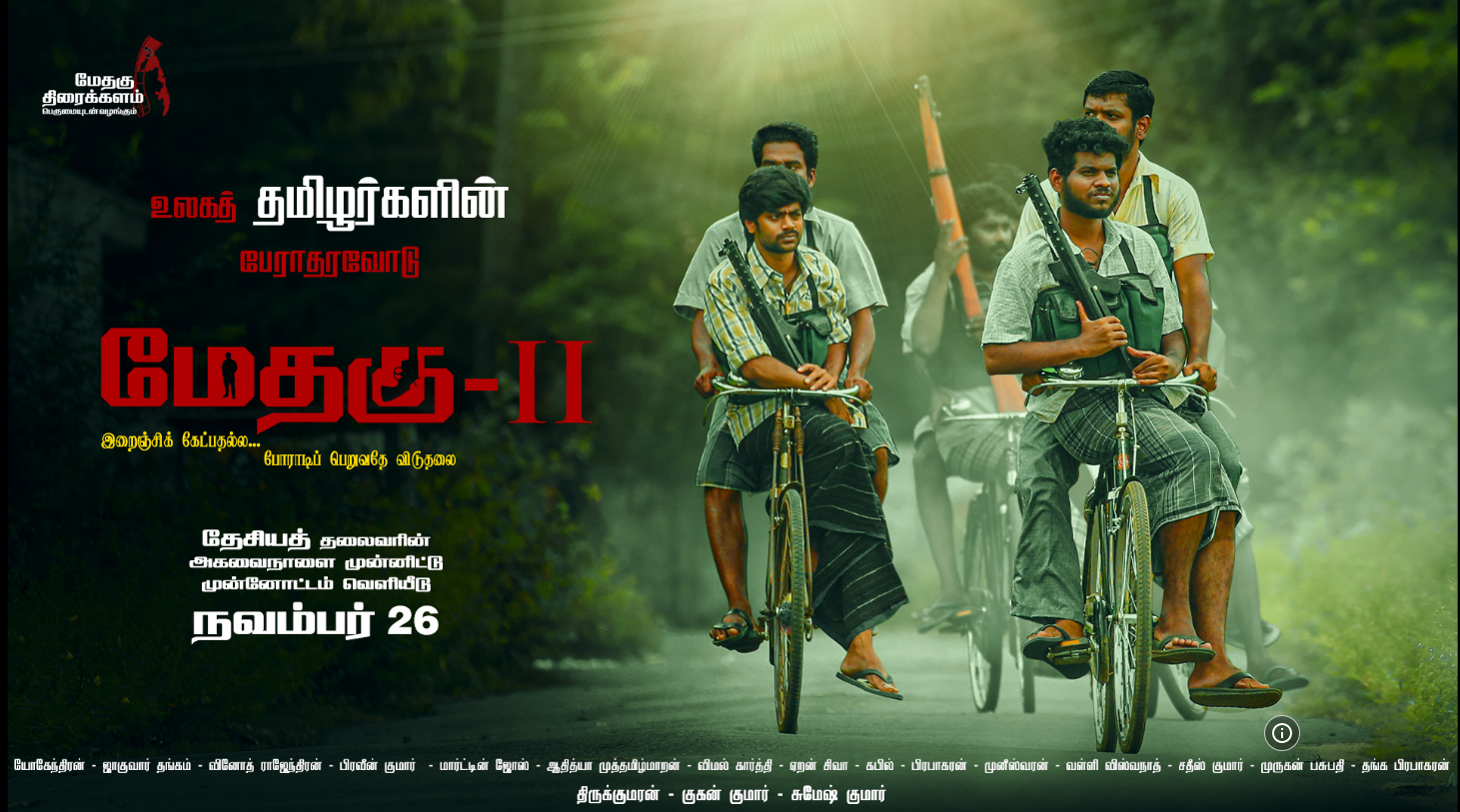Methagu opened to both praise and controversy when it premiered last year, an inevitable situation due to the complex leader it depicts. The first film, which depicted the early years of Liberation Tigers of Tamil Eelam (LTTE) leader Velupillai Prabhakaran, was not only banned in the country it illustrates but the Sri Lankan government also made efforts to bar it from screens around the world – a move that was accepted by Cambodia’s government. And so, Methagu entered the long list of films ostracised by the Sri Lankan state, granting it a legacy of infamy from the off. The first film shows Prabhakaran in his youth and the political state of the nation, as well as the oppression faced by the Tamils at the hand of the Sinhalese. We watch as an angry young boy decides to act boldly, rather than stand by and watch the genocide of his people.
Methagu 2 is a sequel, continuing a few years from where the first film concluded. We follow Prabhakaran and the LTTE’s armed struggle, from the assassination of Duraiappah to the appointment of Rajiv Gandhi as the Prime Minister of India.
The film opens in 2013, employing one of the stronger techniques used in the first part: the frame narrative. The first half depicts the rise of Prabhakaran through a kuthu troupe, whereas the second part uses a group of college students, seeking inspiration for a traditional villu paatu show. The first surprise of the film comes in the form of Nasser - one of the most versatile character actors in the Indian Tamil film industry. His years of experience as a film and stage actor lends Methagu 2 presence and gravitas. Nasser plays the role of the narrator, explaining the events that made up this section of Prabhakaran’s life.

Throughout, the film poses a few philosophical questions: is self-immolation justified? Can we trust the media? Does an eye for an eye make the whole world blind? The names of people and places such as Mao, Che Guevara, Vietnam and Palestine are dropped throughout the film, providing a solid foundation and understanding of ideologies that influenced Prabhakaran and the politics of the time. The film leaves these questions and topics open, or at most with curt one sentence responses from Nasser, allowing the audience to engage with them too.
The film was produced with a slightly larger budget compared to the first instalment, which definitely shows in places. The film is a lot more visually striking: bold colours jump out of the screen, and a lens flare during one suspenseful scene gave the moment a touch of ethereal limbo. There are convincing lighting choices to imitate a thunderstorm. The style of the film is a lot grittier, reflecting the portrayals of the gruesome atrocities onscreen. The camerawork in sequences is dynamic: there are low Dutch angles, a free flowing camera and, at one point, the image is upside down - mirroring the topsy-turvy horror of it all. At moments like these, the filmmaking reminded me of Anurag Kashyap’s 6 hour masterwork epic ‘Gangs of Wasseypur.’
Of course, the low budget (compared to other Kollywood blockbusters) and socio-political restraints come with its cinematic drawbacks. The soundtrack is an improvement from the first part, however, the sound design and mixing are sloppy in sections. More than a decade of history needed to be condensed into two hours, so there were also pacing issues. Almost all the actors are unfortunately amateurs, and their lack of experience showed at places, though Gowri Shankar, playing Prabhakaran, does a solid job. Any doubts of his performance at the start of the film are allayed by the film’s climax.
However, despite its flaws, Methagu 2 is an important film in archiving the history of man who grew to be the leader of both the Tamil Tigers and of a movement that continues to have significant impact on the Tamil homeland and around the world. A third part is suggested in the final scene, and I hope it gets the time, money and creative input that a story like this deserves. Both films are a must watch for anyone looking for an introduction to the formative years of the Tamil Eelam struggle.
Images Methagu Thiraikkalam.
_____
Official trailer for the film below.
